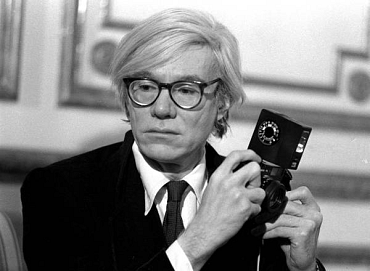Andy Warhol - An American History in Pisa

"Pop art is a way of loving things", said Andy Warhol, an artist who like no one else has fully embodied the contradictions of the United States. Through the large series themes that have marked his works one can in fact observe the evolution of an entire nation, from stardom to journalistic news, to the objects most commonly used in the consumer society.
To observe the works of Warhol means also to look, through the lens of his art, at the events that have shaken the American history and even the world: from the series dedicated to the Most Wanted Men to Gun, from Knives to the series of Electric Chairs, from portraits of Marilyn Monroe and Liz Taylor to those of Mao and Richard Nixon and to the images of the assassination of John Kennedy.
This fall Pisa dedicates to Andy Warhol the exhibition "Andy Warhol - An American History", hosted at the Blue Palace until February 2 with 150 works (including 20 polaroid). The exhibition brings in Italy works from all over the world, especially from the Andy Warhol Museum in Pittsburgh and other historical collections in Europe.
The show opens with the self-portraits in which the artist 'iconize' his face, those of the sixties, in which he portrays himself as a thoughtful intellectual, and those with the silvery wig of the last period.
Then the exhibition continues with an immersion in the season of Pop (1962-1968), represented by thirty works among which the great framework of the dollar, the boxes of Brillo soap and the cans of Campbell's Soup.
Do not miss then the diptych of 13 Most Wanted Men and the series dedicated to the Electric Chair, the paintings of Guns and Knives, the famous cover image of the book "Gomorrah" by Roberto Saviano.
Some photographs and works bear witness to the aggression in which the artist was seriously injured and almost given up for dead, in 1968 by the hands of a deranged. This experience is showed by some photographs of his abdomen torn apart taken by Richard Avedon and published by the newspapers of the time, in addition to the large painting titled Skull.
Then of course the icons: first of all Marylin in the historical sequence of ten and in two black and white versions, but also the great paintings of Liz Taylor, Mick Jagger, Joseph Beuys, Troy Donahue and photographs of Francis Bacon, John Lennon and Yoko Ono, Keith Haring, the 16mm film with Marcel Duchamp, Dali, Lou Reed, Bob Dylan, Dennis Hopper and others.
But also the policy was not immune to his spectacle. Hence the political assassination of John Fitzgerald Kennedy ends up identifying with the tragic mask of Jacqueline Kennedy, while Mao becomes the subject of one of his most popular works.
We then move on to a later creative season. Here Eggs and Yarns assume the forms of giant abstract paintings. In other works instead he reinvents the mythology of America, as in the canvas Myths, on which he put together Superman and Mickey Mouse, Santa Claus and Dracula, the Mami of "Gone with the Wind" and the wicked witch in the "Wizard of Oz", and also himself in the role of The Shadow.
The exhibition features a space dedicated to the events that have characterized his time, as the tragedy of the earthquake in Naples, represented here by two huge canvases. Finally, the show ends with one of the innumerable, brilliant inventions of Warhol, the famous wallpaper decorated with heads of cow.











